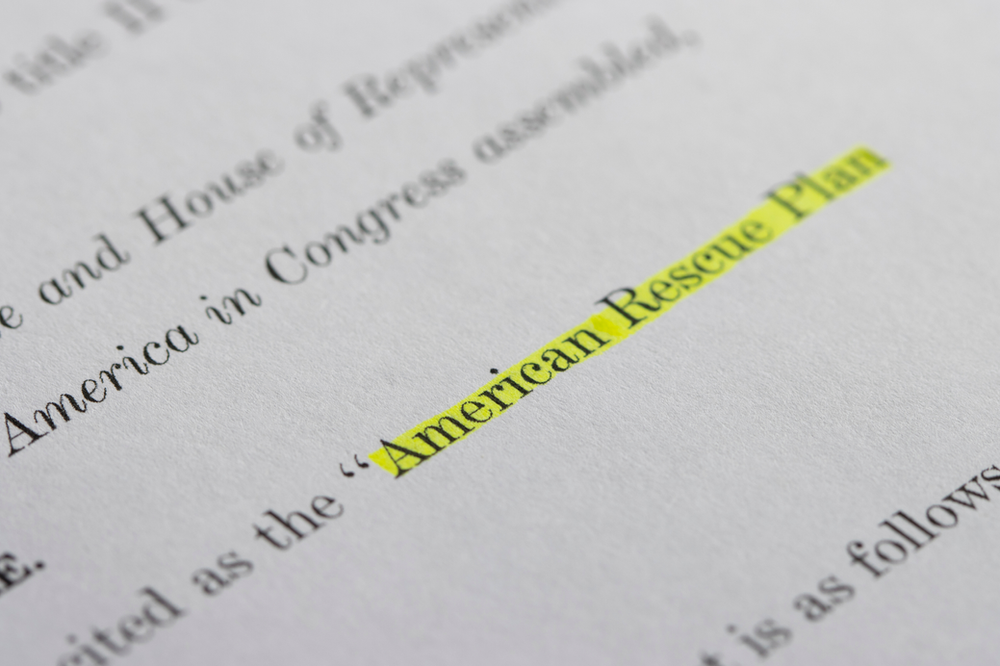The American Rescue Plan Act (ARPA) made significant changes to the Families First Coronavirus Response Act (FFCRA)’s paid leave provisions, including:
- Expanding the available tax credits for employers who provide paid leave voluntarily,
- Providing three additional qualifying reasons for voluntary paid leave,
- Resetting the maximum limits for paid leave as of April 1, 2021, and
- Adding an anti-discrimination provision that disqualifies employers from receiving a tax credit if they violate the anti-retaliation or nondiscrimination rules.
The ARPA is a comprehensive piece of legislation that covers a lot of ground – in addition to the ARPA’s effect on COBRA provisions and the ARPA’s effect on the FFCRA’s paid leave provisions, it also contains provisions that affect defined benefit plans, dependent care pre-tax benefits, and executive compensation, and it contains other provisions that relate to specific industries.

Expansion of the FFCRA’s Leave Provisions, Tax Credits, and Qualifying Reasons
The Families First Coronavirus Response Act (FFCRA), enacted last year, required employers with less than 500 employees to provide paid leave to employees who were unable to work due to COVID-19 – as much as two weeks paid leave under the Emergency Paid Sick Leave Act (EPSLA) and as much as ten weeks under the Emergency Family and Medical Leave Act (EFMLA).
Those mandatory provisions expired at the end of 2020, but the Consolidated Appropriations Act (CAA) allowed employers to provide voluntary paid leave to employees and receive a refund through payroll tax credits. That expired on March 31, 2021.
The ARPA Expands the FFCRA’s Leave Provisions
The American Rescue Plan Act (ARPA) expanded and redefined the FFCRA’s and the CAA’s paid leave provisions. It is no longer mandatory for employers to provide COVID-19-related paid leave, and the ARPA extends the CAA’s tax credits to reimburse employers who voluntarily provide COVID-19-related paid leave to their employees.
The ARPA Expands the Tax Credits Available for Voluntary Paid Leave
The availability of tax credits to reimburse employers with less than 500 employees who provide voluntary paid leave has been extended through September 30, 2021. The ARPA also increases the maximum tax credits that can be received for voluntary paid leave by eliminating the requirement that the first ten days of emergency family medical leave be unpaid.
Tax credits are now available for employers who voluntarily provide COVID-19-related paid leave under the FFCRA to employees from April 1, 2021 (the expiration of the CAA tax credits) through September 20, 2021.
The ARPA Adds Qualifying Reasons for Voluntary Paid Leave
The ARPA also expanded the qualifying reasons for both paid sick leave and paid emergency family leave under the FFCRA. There were previously six reasons that would qualify an employee for paid sick leave under the FFCRA. Employees were covered only if they were:
- Subject to a COVID-19 quarantine or isolation order,
- Advised to self-quarantine by a healthcare provider,
- Experiencing COVID-19 symptoms,
- Caring for a person who was subject to a quarantine order or advised to quarantine by a healthcare provider,
- Caring for a child whose school or daycare was closed due to COVID-19, or
- Experiencing “any other substantially-similar condition specified by the Secretary of Health and Human Services.”
The ARPA adds three qualifying reasons that will justify an employer providing voluntary paid leave (and receiving reimbursement through tax credits). Employees are now covered if they are:
- Receiving a vaccination for COVID-19,
- Recovering from “an injury, disability, illness, or condition related to COVID-19 vaccinations,”
- Waiting for test results when the employee has been exposed to COVID-19 or if the employer requested the test.
The qualifying reasons now apply to both sick leave and emergency family medical leave for voluntary paid leave under the FFCRA.

The FFCRA’s Limit for Paid Leave was Reset on April 1, 2021
The ARPA also resets the maximum limits for paid leave as of April 1, 2021 and gets rid of the requirement that the first ten days of emergency family medical leave be unpaid.
There is still a 10 day or 80 hour-limit for reimbursable paid sick leave, but the slate is now wiped clean and qualifying employees who have already used their limit of paid leave can now receive an addition 10 days or 80 hours for paid sick leave with reimbursement to the employer through payroll tax credits.
The ARPA Prohibits Discrimination Against Certain Categories of Workers
The ARPA specifies that tax credits will only be available to employers who provide voluntary paid leave to all employees regardless of status, and an employer who violates the anti-retaliation or nondiscrimination rules will not be eligible for tax credits.
For example, the employer cannot discriminate based on an employee’s compensation, full-time or part-time status, or the length of time the worker has been employed.
The ARPA is a complex piece of legislation that impacts many areas of employment law – your attorney at Murray Lobb can help you to understand the effect of the ARPA on your business, the ARPA’s effect on previous obligations imposed by COBRA, FFCRA, and CAA, and how to ensure you are in compliance so that your business receives reimbursement through the available tax credits.
Please feel free to contact one of our Murray Lobb attorneys to obtain our legal advice regarding your business’ obligations under the ARPA and the Families First Coronavirus Response Act (FFCRA). We also remain available to help you with all your general business, corporate, and estate planning needs.
